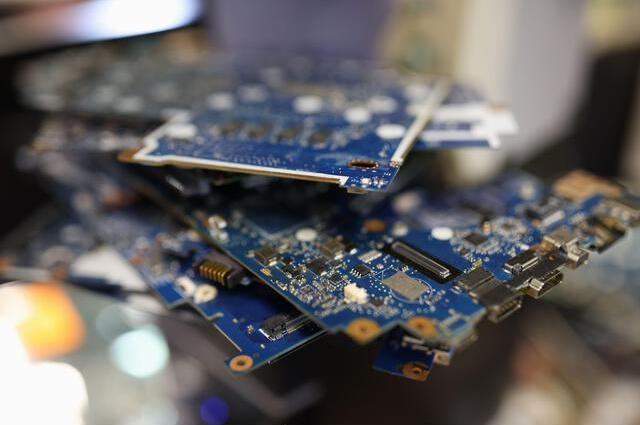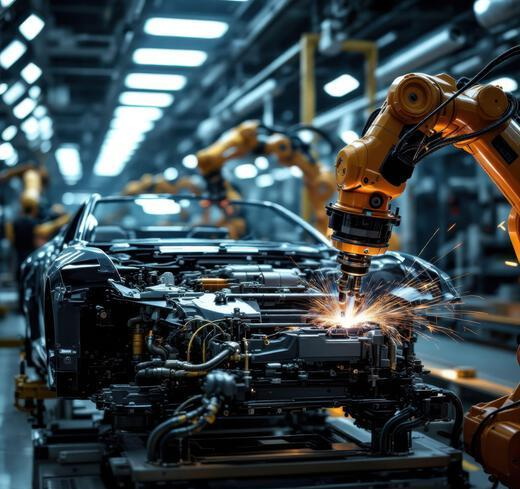Content Menu
● Understanding SMT Assembly Lines
● Benefits of SMT Assembly Lines
● Factors Contributing to Efficiency in SMT Assembly Lines
>> 1. Optimized Process Flow
>> 2. Equipment Optimization
>> 3. Balanced Load Distribution
>> 4. Just-In-Time (JIT) Inventory Management
>> 5. Training and Education
● Automation's Role in Enhancing Efficiency
● Challenges in Implementing SMT Assembly Lines
● Future Trends in SMT Assembly Lines
● Conclusion
● FAQ
>> 1. What is Surface Mount Technology (SMT)?
>> 2. How does automation improve efficiency in SMT assembly?
>> 3. What are the key components of an SMT assembly line?
>> 4. What challenges do manufacturers face when implementing SMT?
>> 5. How does JIT inventory management benefit SMT assembly lines?
● Citations:
Surface Mount Technology (SMT) has revolutionized the electronics manufacturing industry by streamlining the process of assembling printed circuit boards (PCBs). The SMT assembly line integrates various automated technologies and methodologies to enhance production efficiency, reduce costs, and improve product quality. This article explores how an SMT assembly line achieves these improvements and the critical factors that contribute to its success.

Understanding SMT Assembly Lines
SMT assembly lines are designed to automate the process of placing electronic components onto PCBs. Unlike traditional through-hole technology, where components are inserted into drilled holes, SMT allows for components to be mounted directly onto the surface of the PCB. This method not only reduces the size of the components but also increases the density of electronic circuits, enabling manufacturers to produce smaller and more efficient devices.
Key components of an SMT assembly line include:
- Solder Paste Printer: Applies solder paste to the PCB.
- Pick and Place Machines: Automatically pick up components from feeders and place them on the PCB with high precision.
- Reflow Oven: Melts solder paste to secure components in place.
- Automated Optical Inspection (AOI): Checks for defects in component placement and soldering.
Benefits of SMT Assembly Lines
The adoption of SMT assembly lines offers several advantages that contribute to improved manufacturing efficiency:
- Increased Production Speed: Automated processes significantly reduce assembly time. For instance, pick and place machines can place thousands of components per hour, far exceeding manual assembly rates.
- Reduced Labor Costs: Automation minimizes the need for manual labor, lowering overall labor costs. This allows companies to allocate resources more effectively.
- High Component Density: SMT enables manufacturers to fit more components on a single board, which is essential for modern electronics that require compact designs.
- Improved Quality Control: Automated inspection systems like AOI ensure that defects are detected early in the production process, reducing waste and improving overall product quality.
Factors Contributing to Efficiency in SMT Assembly Lines
To maximize efficiency, several strategies can be implemented within SMT assembly lines:
1. Optimized Process Flow
A well-organized workflow is crucial for minimizing bottlenecks. This involves arranging equipment in a logical sequence and ensuring that materials are readily available at each stage of production.
2. Equipment Optimization
Regular maintenance and calibration of machines ensure they operate at peak performance. This includes updating software for pick and place machines and ensuring solder paste printers are correctly aligned.

3. Balanced Load Distribution
Distributing workload evenly across machines prevents any single machine from becoming a bottleneck. This can be achieved by analyzing production data and adjusting workloads accordingly.
4. Just-In-Time (JIT) Inventory Management
Implementing JIT inventory systems helps reduce excess stock and ensures that materials are available when needed without overstocking. This approach minimizes waste and storage costs.
5. Training and Education
Investing in training programs for operators enhances their skills in troubleshooting and operating machinery efficiently. A well-trained workforce is critical for maintaining high productivity levels.
Automation's Role in Enhancing Efficiency
Automation is at the heart of SMT assembly lines, enabling manufacturers to achieve higher levels of precision and speed. Key automated processes include:
- Component Counting: Automated component counters ensure accurate inventory management, reducing errors associated with manual counting.
- Automated Scheduling Systems: These systems optimize production schedules based on real-time data, ensuring that resources are utilized effectively without unnecessary downtime.
- Predictive Maintenance: Utilizing data analytics to predict when machines will require maintenance helps prevent unexpected breakdowns that can halt production.
Challenges in Implementing SMT Assembly Lines
Despite their numerous advantages, implementing SMT assembly lines can present challenges:
- Initial Investment Costs: The cost of purchasing advanced machinery can be significant, deterring some manufacturers from transitioning to SMT.
- Complexity of Equipment: The advanced technology used in SMT requires skilled operators who understand how to manage and troubleshoot complex machinery.
- Quality Control Issues: While automation improves consistency, it also necessitates rigorous quality control processes to ensure that automated systems do not overlook defects.
Future Trends in SMT Assembly Lines
The future of SMT assembly lines is poised for further advancements driven by technology:
- Integration with Industry 4.0: As manufacturers adopt smart factory concepts, integrating IoT devices into SMT lines will enable real-time monitoring and data analysis for continuous improvement.
- Sustainability Initiatives: There is a growing emphasis on environmentally friendly practices within manufacturing processes. SMT lines can contribute by reducing waste through efficient material usage.
- Advanced Robotics: The use of collaborative robots (cobots) alongside human operators will enhance flexibility in production while maintaining high efficiency levels.
Conclusion
In conclusion, SMT assembly lines significantly improve manufacturing efficiency through automation, optimized workflows, and enhanced quality control measures. By adopting these advanced technologies, manufacturers can increase production speed, reduce costs, and produce high-quality electronic products that meet modern demands. As technology continues to evolve, embracing innovations within SMT processes will be crucial for maintaining competitiveness in the electronics industry.

FAQ
1. What is Surface Mount Technology (SMT)?
Surface Mount Technology (SMT) is a method used in electronics manufacturing where components are mounted directly onto the surface of PCBs instead of being inserted into drilled holes.
2. How does automation improve efficiency in SMT assembly?
Automation enhances efficiency by speeding up processes such as component placement and inspection while reducing labor costs associated with manual assembly tasks.
3. What are the key components of an SMT assembly line?
Key components include solder paste printers, pick and place machines, reflow ovens, and automated optical inspection systems.
4. What challenges do manufacturers face when implementing SMT?
Manufacturers may encounter challenges such as high initial investment costs, complexity of equipment operation, and ensuring rigorous quality control measures.
5. How does JIT inventory management benefit SMT assembly lines?
Just-In-Time (JIT) inventory management reduces excess stock and waste by ensuring materials are available only when needed for production, thus optimizing resource usage.
Citations:
[1] https://www.neodensmt.com/news/improve-smt-production-efficiency-48868013.html
[2] https://www.ourpcb.com/smt-line.html
[3] https://blogs.sw.siemens.com/valor/2021/08/02/is-new-infrastructure-the-only-way-to-improve-shop-floor-productivity/
[4] https://www.adoptsmt.com/en/efficiency-enhancement-in-smt-manufacturing/
[5] https://vectorbluehub.com/smt-assembly
[6] https://www.smtfactory.com/Optimizing-Efficiency-Strategies-for-A-Smooth-SMT-Line-Production-Process-id47463586.html
[7] https://www.pcbcart.com/article/content/smt-assembly-development-trend.html
[8] https://www.pcbasic.com/blog/smt_production_line.html
[9] https://www.smtneoden.com/news/how-to-effectively-improve-the-production-efficiency-of-pcb-smt-machine/
[10] https://www.viasion.com/blog/smt-assembly-and-its-advantages/
[11] https://www.wevolver.com/article/smt-process
[12] https://blog.matric.com/smt-production-for-pcbs-matric
[13] https://www.smtfactory.com/Perfecting-Your-SMT-Line-Layout-for-Efficiency-id47017676.html
[14] https://www.seamarkzm.com/benefits-of-using-smt-component-counters-for-assembly-line-efficiency.html
[15] https://www.smthelp.com/methods-and-measures-to-improve-the-production-efficiency-of-smt-production-line
[16] https://www.protoexpress.com/blog/good-not-so-good-sides-surface-mount-technology/
[17] https://www.linkedin.com/pulse/rapid-smt-assembly-improving-efficiency-surface-oerzc
[18] https://www.raypcb.com/line-efficiency/
[19] https://www.linkedin.com/pulse/how-improve-smt-production-efficiency-




















